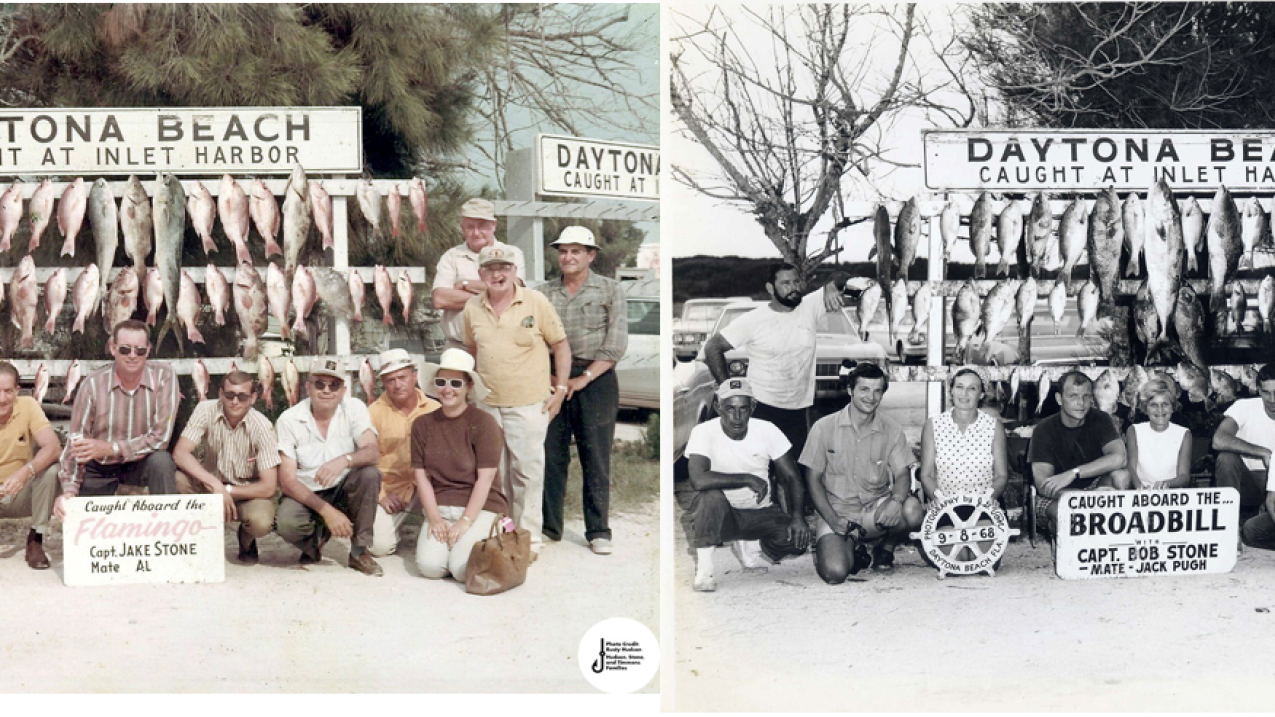People have spent more time at home in the past two years, but that hasn’t stopped volunteers from counting fish on underwater cameras, recording precipitation data, or reporting severe weather events. NOAA citizen science projects that could be done remotely offered thousands of people opportunities to contribute to important scientific projects.

Two photos side by side which show historic fishing photos. Both photos look almost the same with a group of people gathering at the same dock. The photos are taken three years apart. (Image credit: Rusty Hudson, Hudson, Timmons, and Stone families)
Some example projects include:
Old Weather: WW2
Through the Old Weather offsite link project, volunteers recover data from historical ship’s logs so researchers can use the information in advanced weather and climate models. Trying to solve the mystery of an unexplained oscillation in the U.S. Navy’s temperature records, the Old Weather WW2 project offsite link engaged more than 3,500 volunteers. This project is now complete; learn about the results offsite link.
OceanEYEs
The Pacific Islands Fisheries Science Center launched the OceanEYEs offsite link project in September 2020. Since then, more than 15,000 volunteers have made nearly 2.6 million classifications across 260,000 underwater images from the 2019 Bottomfish Fishery-Independent Survey in Hawaii. Initial results suggest that the information provided by multiple citizen scientists is as accurate as that provided by professional annotators. This work allows NOAA scientists to look at new ways of counting fish, including using a combination of professionals, citizen scientists, and artificial intelligence.
FISHstory
FISHstory offsite link volunteers remotely identified and counted fish and people from historic photos from the 1940s-1970s in Daytona Beach, Florida. More than mementos of days spent on the water, these images were a source of untapped data on fishing locations, techniques, and changes in the sizes and species of the fish caught. Since the project began in May 2020, 2,175 volunteers worked with the South Atlantic Fishery Management Council to make 35,617 individual classifications within these photos. As a result, data collection for the pilot project was completed in under a year.
CoCoRaHS
Volunteers in the Community Collaborative Rain, Hail and Snow network offsite link (CoCoRaHS) share daily precipitation observations using standardized manual rain gauges mounted in their backyards, workplaces, schools or community centers. A journal article offsite link published in the Bulletin of the American Meteorological Society in 2021 found a pronounced increase in data reporting by these volunteers — with a decrease in the percentage of days with missing reports — during the early months of the pandemic.
“These opportunities give people a chance to do something meaningful and connect to a broader community from the safety of their own homes,” said John McLaughlin, NOAA Citizen Science Co-coordinator. Learn more about citizen science projects that our agency supports and consider getting involved.



